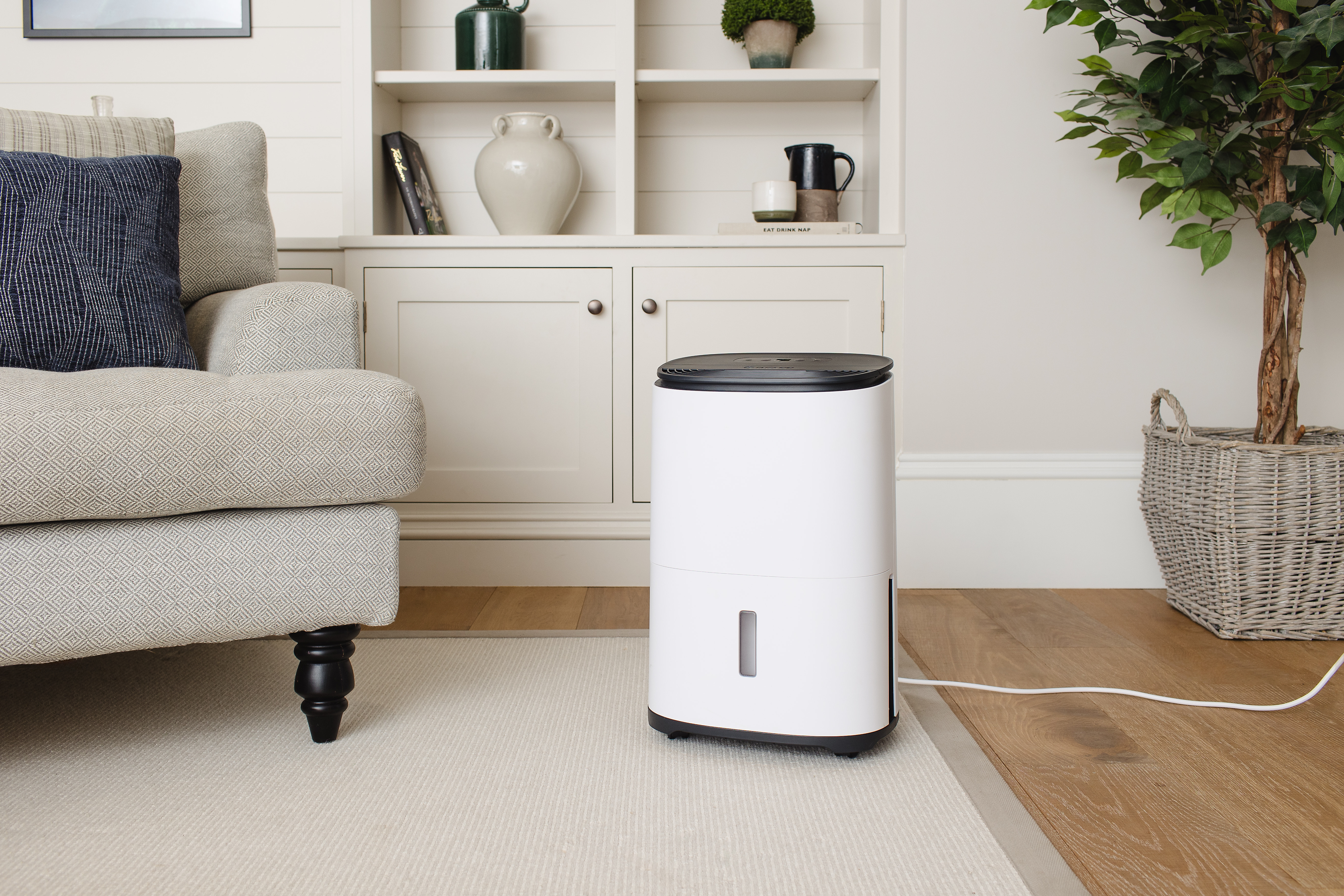
A dehumidifier has quickly become a must-have appliance for drying laundry and protecting homes from damp and mould. Many are saying goodbye to quick-fix solutions of painting over mould and are instead looking for the root of the problem – but did you know that a dehumidifier can be used throughout every season, not just when it’s cold and wet? Maybe you are thinking of getting a dehumidifier yourself but aren’t sure whether it’s worth the money if you only use it in the winter. Or perhaps you’ve already got one and want to know how to make the most out of your machine. Either way, we’re here to share the many perks that come with using a dehumidifier for 365 days of the year.
Let’s take a look through the seasons and how you can get the most out of your dehumidifier…
Spring
What’s the best use of a dehumidifier in Spring?
If you have a combined dehumidifier and air purifier, the short answer is to activate Air Purification Mode. This mode is best utilised in springtime when pollen and other airborne allergens begin to make an appearance.
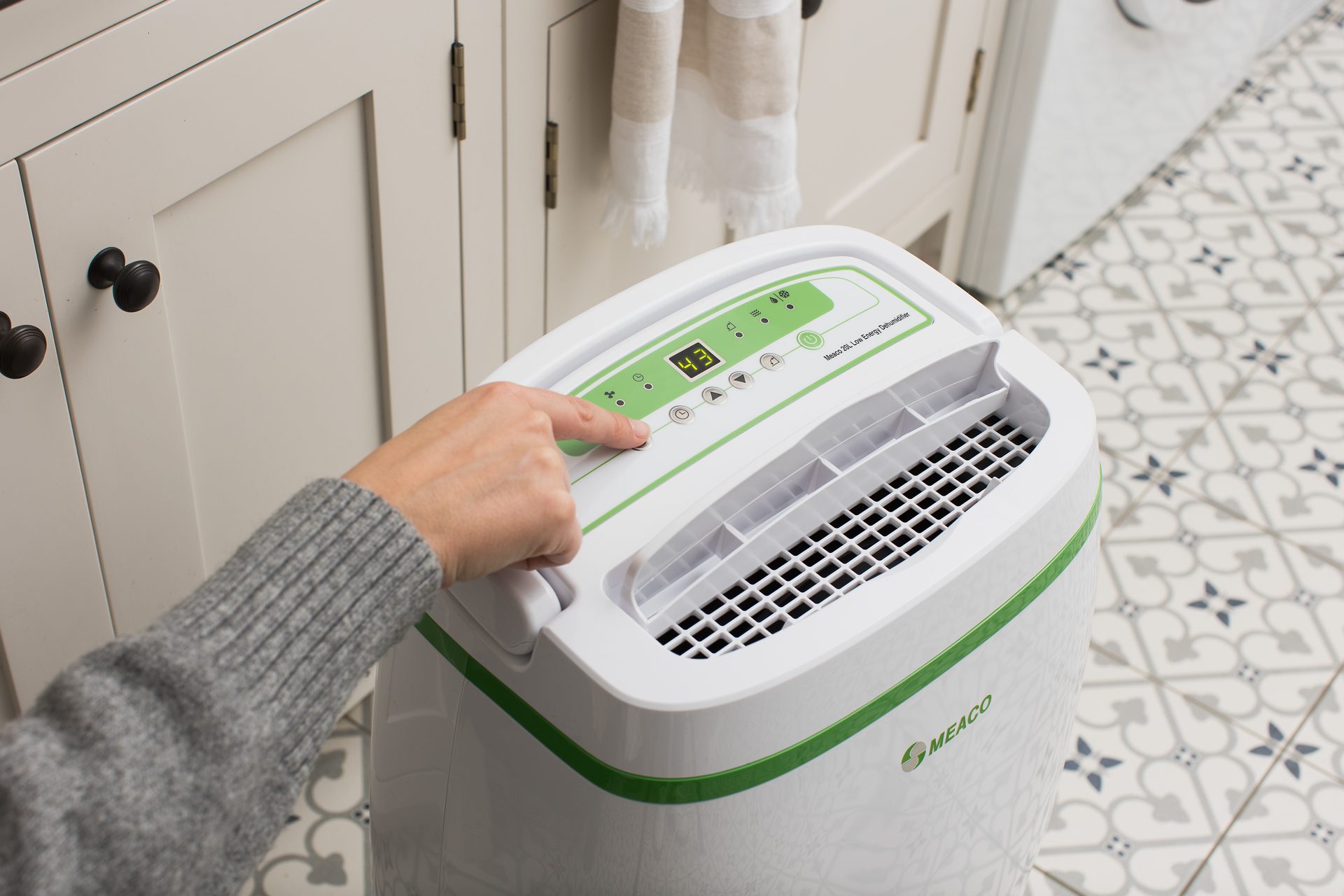
Our Low Energy and Arete® ranges double up as air purifiers; so, even if your home is at a stable humidity level and you don’t feel the need to dehumidify, you can use it for air purification instead. All 2 in 1 Meaco dehumidifier and air purifier models come with a free medical-grade H13 HEPA filter, giving you the chance to try out the air purification feature. So on days in the springwhen dehumidification isn’t necessary, you can turn on Air Purification Only Mode (AP Mode), and let the dehumidifier clean the air in your home. The great thing about our combined dehumidifiers and air purifiers is, although you can choose to run each function on its own, you don’t have to choose one or the other. As long as the HEPA filter is in place in the dehumidifier, the machine will dehumidify and air purify at the same time.
Purifying the air is great for those with allergies such as hay fever and other respiratory conditions such as asthma. By capturing 99.75% of particles as small as 0.3 micrometers (μm), a HEPA filter can remove mould spores, pollen, dust, pet dander, dust mites and more from the air helping to reduce symptoms caused by allergies. Although, you don’t have to have allergies to benefit from air purification, it’s also great for those who simply want to breathe in cleaner air in their home.
Summer
Should I use a dehumidifier in the Summer?
There are a number of benefits to using a dehumidifier in the summer, like making highly humid days more bearable and reducing allergy symptoms for later onset allergies like grass pollen (if you’re using a combined dehumidifier and air purifiers such as our MeacoDry Arete® One Dual Dehumidifier/ Air Purifier range).
But should you run your dehumidifier 24/7 throughout the summer? Is it worth it? With Meaco’s unique Control Logic, yes.
Every Meaco dehumidifier is engineered with Meaco Control Logic. This programme achieves accurate dehumidification whilst using as little energy as necessary (and so saving you money). Your dehumidifier won’t ever be running when it doesn’t need to, meaning you don’t have to worry about paying to run a machine unnecessarily. On dry summer days when the relative humidity is low, a Meaco dehumidifier is clever enough to go to sleep when it’s not needed. But it also means that a Meaco dehumidifier is clever enough to wake up and run when it needs to making your home a more comfortable environment.
Reduce relative humidity, even in the Summer
In Britain, hot summer days used to be a phenomenon we waited all year round for and got 1 day in the high 20’s and the whole country went mad. Thanks to climate change, hot days are much more frequent in British summer time (although we still haven’t quite figured out how to cope and moan that it’s too hot!).
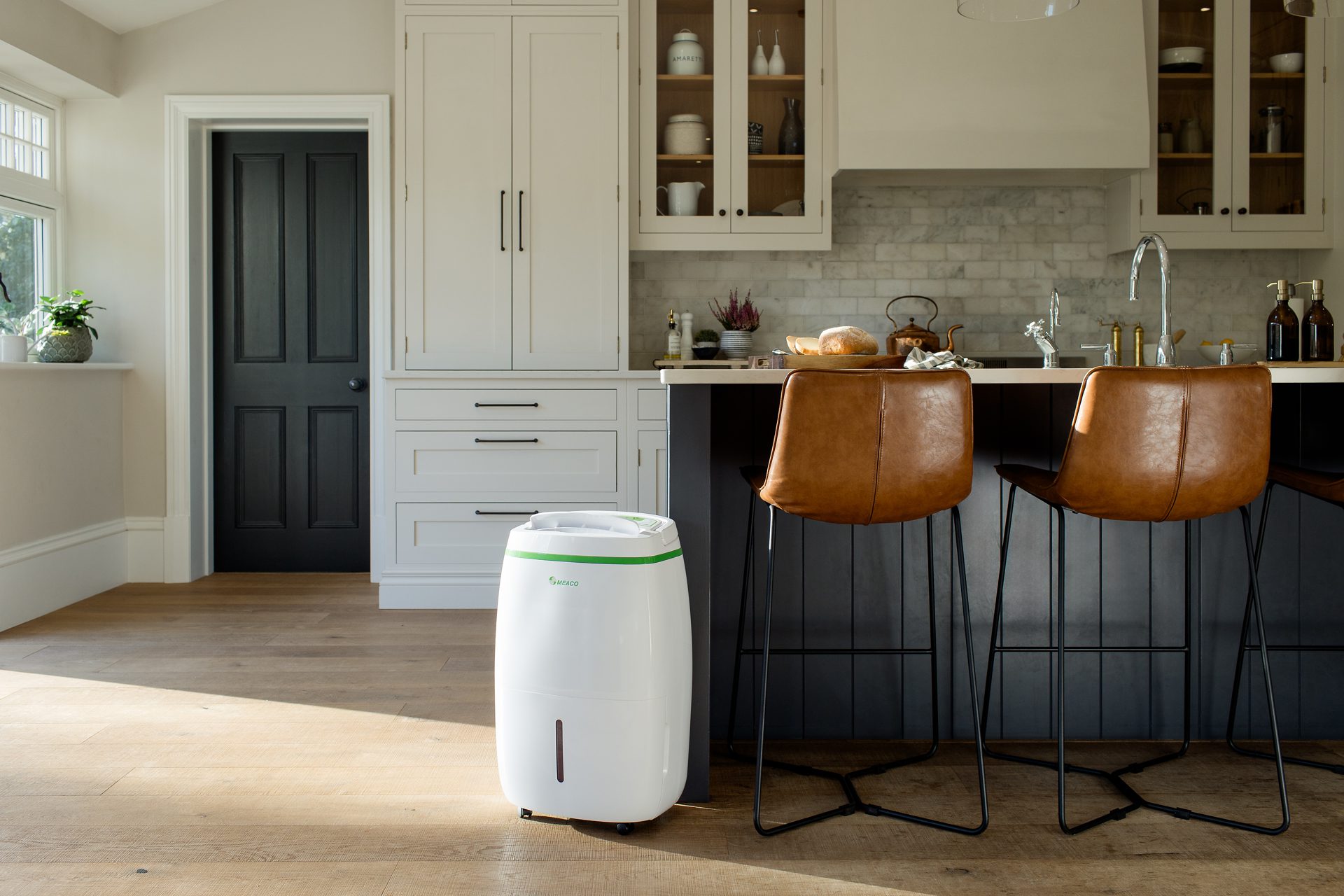
Hot summer days are great fun, however when the heat turns ‘sticky’ as a result of high humidity – we’re all suddenly less of a fan! Think sticking to leather sofas and taking quick cold showers throughout the day to keep cool. How can we make days like these bearable? A dehumidifier can provide some relief. By removing the excess moisture from the air, a dehumidifier will lower the humidity level and reduce that horrible sticky feeling.
If you use an air conditioner to keep cool during the summer, using a dehumidifier in accompaniment can work in your favour. Air conditioners work more efficiently in environments with lower humidity levels, which is why dehumidifiers are commonly used around the world alongside air conditioners. In hot and humid places like Asia, dehumidifiers and air conditioners are used together to remove that sticky feeling from the air, helping you feel cooler, quicker.
Protecting your home from mould all year round
You might think summer is the least likely time for mould to grow, however, it’s just as likely as in the winter. Mould grows at 68% relative humidity and, on hot summer days, when the humidity is higher than this, mould can start to form. To keep a warm house cool, keeping your windows open is the normal procedure, but this can unknowingly let that high humidity into your home. When that warm air reaches the cooler temperature inside your home, it creates the perfect environment for mould to grow.
How do you stop this? A dehumidifier is the perfect solution when the humidity outside is higher than the humidity in your home. Chris Michael, Managing Director at Meaco, explains how he uses his dehumidifier in the summer:
“When I see the forecast predicts an upcoming heatwave, I make sure my dehumidifier is left on 24/7 and set to a target of 55% RH. This means my dehumidifier removes any excess moisture in the air, removing that uncomfortable ‘sticky’ feeling and helping make a heatwave more manageable.”
Autumn
Drying laundry indoors all year round is the new normal, not just in Autumn and Winter
Us Brits know UK weather is far from reliable. And with the global climate crisis, the weather’s more unpredictable than ever. Last year we saw heatwaves in September, heavy rainfall and two named storms in August and a ‘record-breaking June’ for heat.*
The weather affects our daily lives more than we might realise. Drying laundry is something in our daily routines that is dictated by the weather. The ideal scenario for drying laundry would be on the line outdoors on a warm, breezy day. We expect to encounter such ideal weather in the summer and spring, but last August, with Storm Betty and Storm Antoni, no one had such luck. Strong winds and heavy rainfall left us with the familiar winter scenario of drying laundry indoors.
Many of us who already owned a dehumidifier were ready to dry laundry indoors without a problem. And some who owned a fan also, set up the magic combination of a dehumidifier and a fan (see above) – the perfect indoor replica of that ideal outdoor scenario we just described.
But those drying their washing indoors without a dehumidifier were most likely faced with moisture problems like damp and even mould growth. Having a dehumidifier is a great appliance to have when our UK microclimate throws us another weather surprise. With a dehumidifier and it’s dedicated laundry mode, you don’t have to wait for the perfect summer’s day to dry your laundry quickly and efficiently.
Winter
What are the main benefits of dehumidifiers in Winter?
On top of the massive benefits of drying laundry, faster and more efficiently than industry leading tumble dryers, running a dehumidifier in Winter will also help protect your home from issues around damp, mould and condensation. You can reduce these issues by running a dehumidifier 24/7 with our Meaco Control Logic and at an average running cost of 4p/ hour, that’s a no-brainer.
As Winter starts to enter the frame again in the UK, we’ll see temperatures plummet and condensation creep up our windows. Because of this, we’re all more likely to keep our windows tight shut and keep the heat inside. However, by closing all the windows, we are also creating the perfect conditions for damp and condensation as we’re trapping all that moisture inside the house, with no opportunity to escape.
Almost everything will add moisture to your home. Simple things like boiling the kettle for a hot tea, a warm shower after a winter walk and even drying our clothes on the airer. All of this will be adding moisture to an already moist, warm space.
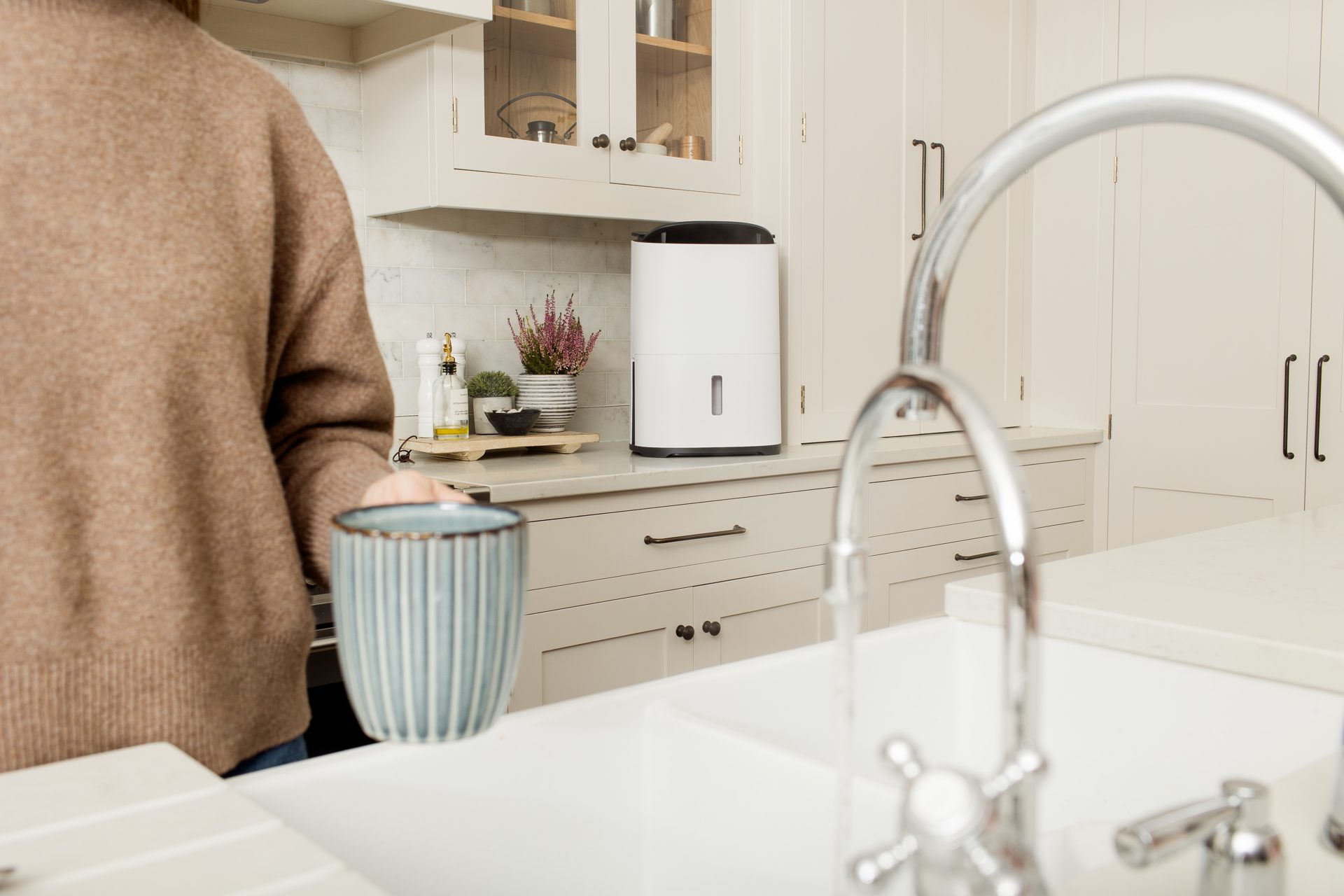
Enter a dehumidifier!
Dehumidifiers are required to maintain a stable relative humidity level and prevent moisture problems from occurring in your home. Simply set your target humidity (for most homes, we recommend 55%RH) and, with Meaco Control Logic, your dehumidifier will do the rest – automatically switching on and off, as needed. This will extract excess moisture from the air and therefore prevent damp and mould as well as reducing condensation on your windows!
This way, you can keep your windows tight shut throughout winter, keeping the warm air inside your home rather than unnecessarily turning the heating up and adding to your electricity bill – and you’ll be protecting your home from damp, mould and condensation as well.
A dehumidifier is great for use, 365 days of the year
With an Air Purification Mode and high performance dehumidification, a Meaco dehumidifier is incredibly versatile all year round. With its Laundry Mode, a Meaco dehumidifier is your reliable washing companion when the weather isn’t so reliable. And with its Meaco Control Logic and efficient energy consumption, a Meaco dehumidifier won’t cost you the earth and works around your needs.
And so, we can see that a dehumidifier is not only for autumn and winter, but can be used throughout the year, through every season.
Products featured
Meaco 12L Low Energy Dehumidifier and Air Purifier
Meaco 20L Low Energy Dehumidifier and Air Purifier
Sources:






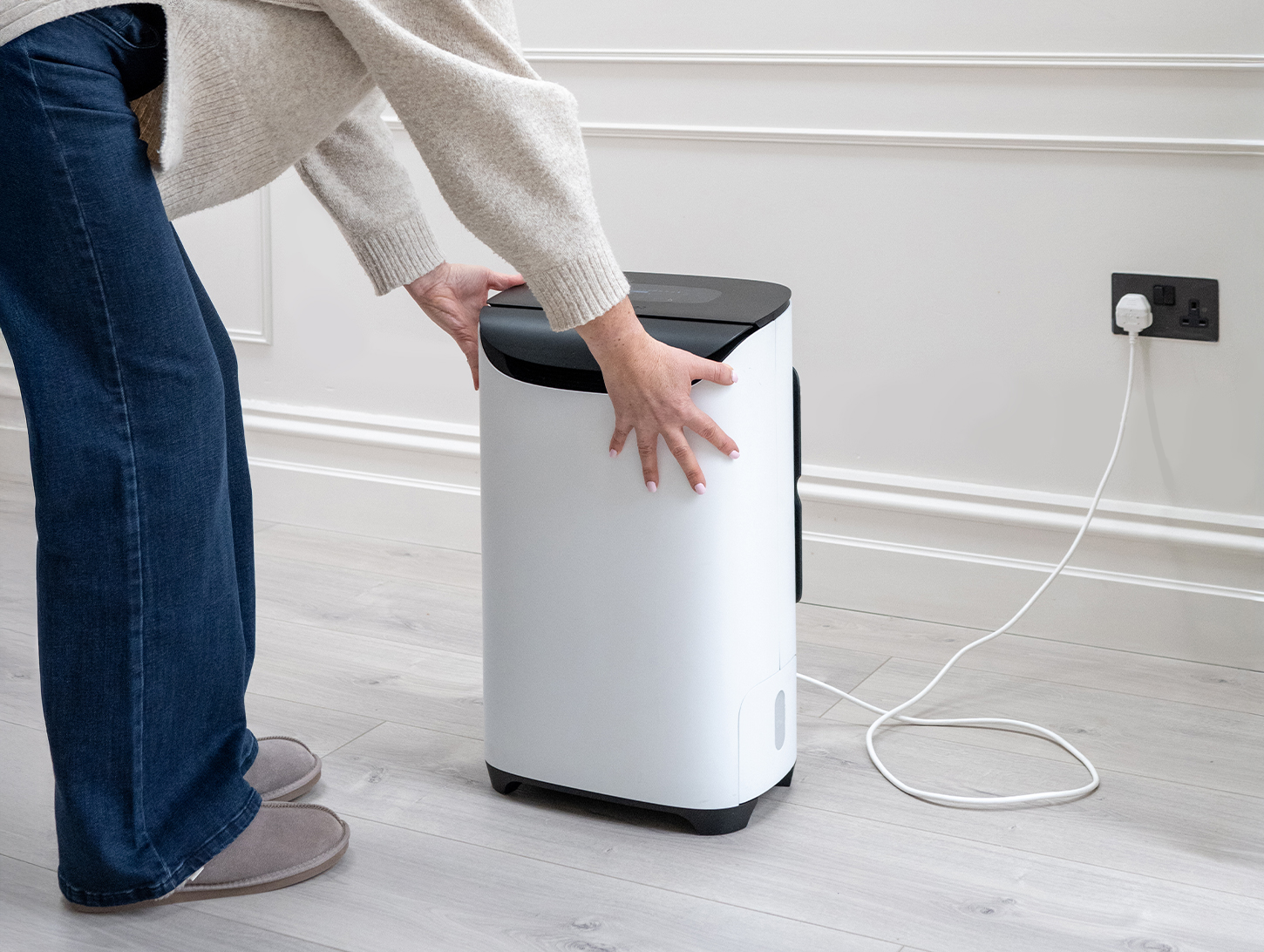
4 responses
What can I do to stop black mould in my Water Tank?
Jacky,
Thank you for your enquiry.
A thin film of moisture can encourage mould if it’s not cleaned regularly. To prevent black mould, empty the tank daily and give it a quick rinse or wipe with a soft cloth to stop stagnant water from sitting inside. You can also, every week or so, wash it with warm soapy water, then dry it fully before placing it back.
Hope that helps,
Omar@Meaco
Advice please… My Garage is mainly below ground level with tanked walls to prevent damp ingress. It has a well fitting automatic door.
However, the garage walls and ceiling are wet with condensation (and mould) because they are cold (because the garage is below ground level) and the relative humidity is often 90%.
I have put ventilation bricks at the top of 3 walls in the 50cm that isn’t below ground level(4 ventilation bricks per wall = 12 total) and I leave the garage door slightly up (about 20cm) to try to create a draft from below upwards to the air vents to achieve some ventilation. Still however I have internal garage RH of 90+%.
I already have a Zambezi dehumidifier in my cool (in winter) conservatory which works just fine in the conservatory when programmed at 50% . I am considering purchasing another one for the garage. However, in our wet Cumbrian weather, it is so damp that our RH is up in the 90%+ outside most of the autumn, winter and spring. (There’s a good reason we have the Lake District here!).
Having put ventilation in the garage (to very minimal successful effect) I am not certain of the wisdom of putting a dehumidifier in the garage, since effectively I fear I will be trying to dehumidify the whole of Cumbria because of the consistently high outside RH. I assume I will simply be sucking in more 90%RH cold wet air from outside and passing it through the dehumidifier – which would be an endless task! Ventilating when the outside RH is higher than inside seems counter intuitive.
Should I close off all ventilation and dehumidify? What would you suggest?
Martin Lee,
Thank you for your enquiry.
You are right, you would need a sealed environment for the dehumidifier to have an effect in your garage.
Garages are often cold therefore a desiccant dehumidifier is best because they don’t mind low temperatures which means that it is perfect for looking after areas that are likely to be colder. These are ideal for garages and workshops where you might keep classic cars, motorbikes, bicycles, camping equipment, tools and other hobby equipment etc.
If you are able to seal the space, please give us a call and we can discuss the difference if you like between our desiccant dehumidifiers.
Kind regards,
Omar.